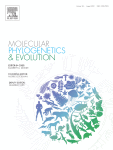Graham, Brendan A., Heath, Daniel D., Pulgarin, Paulo C., Walter, Ryan P., Mark, Melissa, and Mennill, Daniel J. (2022)
Habitat connectivity, gene flow, and population genetic structure in a Neotropical understory insectivore, the Rufous-and-white Wren. Ornithology, published 08 July 2022
Habitat connectivity, gene flow, and population genetic structure in a Neotropical understory insectivore, the Rufous-and-white Wren
Abstract
Among tropical organisms, heightened habitat specialization, limited natal dispersal, and strong philopatry suggests that many species may experience reduced rates of gene flow. Diverse forms of barriers, including geographic, ecological, and behavioural barriers, further promote genetic divergence among tropical bird populations. Here we extend our comprehension of gene flow in tropical birds by examining population genetic structure in a widespread insectivorous songbird of the Neotropics, the Rufous-and-white Wren (
Thryophilus rufalbus). We explore the effects of geographic distance and habitat connectivity on genetic structure using 10 microsatellite loci, and nuclear and mitochondrial sequence data. We report high levels of genetic divergence and population structure with reduced contemporary gene flow between populations over a 500-km transect in Nicaragua and Costa Rica. Mitochondrial DNA and nuclear sequence data indicate that 2 distinct mtDNA genetic groups came into contact in northwestern Costa Rica; molecular dating suggests that the genetic patterns arose as a result of Pleistocene glaciations. Geographic distance and habitat connectivity predicted genetic structure but explained a relatively low proportion of the observed contemporary genetic variation. Patterns were similar for both males and females. Our research demonstrates the deep genetic divergence in tropical birds, and that genetic differentiation can occur over a relatively short distance. For tropical birds, strong limits to gene flow likely arise as a result of limited dispersal from natal populations.







